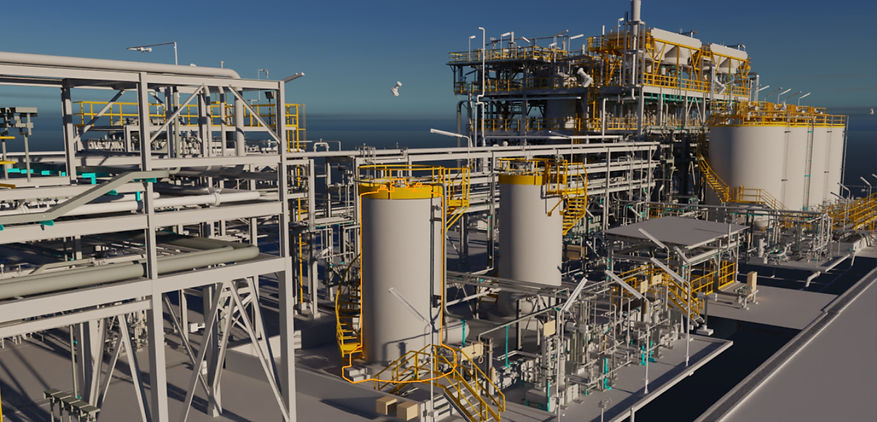
Digital Twinning
This is your About Page. It's a great opportunity to give a full background on who you are, what you do, and what your website has to offer. Double click on the text box to start editing your content and make sure to add all the relevant details you want to share with site visitors.
What is a Digital Twin?
2D data capture involves extracting high-precision orthographic projections, floorplans, and elevations from physical sites or point cloud datasets.
We utilize laser scanning and photogrammetry to deliver detailed technical drawings in CAD and PDF formats—ideal for retrofitting, compliance, or legacy documentation.
Benefits of Digital Twins
engineering precision
Describe one of your services
Time saving
Describe one of your services
Rugalatory support
Describe one of your services
Operational Digital Twin
Overview Instrumental and electrical data conversion refers to the processes and technologies used to transform raw measurements from instruments and electrical systems into usable digital information. This conversion is fundamental in industrial automation, process control, scientific research, and monitoring systems. Key Components 1. Instrumentation Sensors and Transducers: Devices that detect physical phenomena (temperature, pressure, flow, etc.) and convert them into electrical signals Signal Conditioning: Amplification, filtering, and isolation of raw signals Field Instruments: Devices installed in industrial environments (flow meters, level sensors, etc.) 2. Electrical Systems Power Measurements: Voltage, current, frequency, power factor Electrical Parameters: Resistance, capacitance, inductance Power Quality: Harmonics, transients, sags, and swells Conversion Process Analog-to-Digital Conversion (ADC) Sampling of continuous analog signals Quantization of signal amplitude Encoding into digital format (binary numbers) Digital Signal Processing Filtering and noise reduction Scaling and linearization Compensation for environmental factors Data Transmission Industrial protocols (4-20mA, HART, Modbus, Profibus, Foundation Fieldbus) Wireless transmission (Wi-Fi, Bluetooth, Zigbee) Network integration (Ethernet, OPC) Applications Process Control Systems: Continuous monitoring and adjustment of industrial processes SCADA Systems: Supervisory control and data acquisition Smart Grids: Electrical power distribution monitoring Laboratory Instrumentation: Scientific measurement and data collection Building Automation: HVAC, lighting, and security systems


Engineering Digital Twin
P&ID (Piping and Instrumentation Diagram) conversion is the process of transforming outdated, hand-drawn, or paper-based P&IDs into digital formats using CAD software or intelligent P&ID tools. This modernization enhances accuracy, accessibility, and integration with contemporary plant management systems like CMMS, SCADA, and BIM. Converting legacy drawings is essential for compliance with industry standards (ISA-5.1, ISO 14617), error reduction, and seamless data sharing across teams.
The conversion process involves data collection, digitization, standardization, and validation**. First, existing P&IDs—whether paper, PDFs, or scans—are gathered and reviewed for necessary updates. Next, digitization is performed through manual redrawing (using tools like AutoCAD or SmartPlant P&ID), automated OCR extraction, or a hybrid approach. The digital P&IDs are then standardized with correct symbols, instrument tags, and metadata before being linked to control systems (DCS/PLC) and plant databases. Finally, rigorous quality checks ensure consistency with process flow diagrams, loop drawings, and safety standards (HAZOP). Despite challenges like poor-quality originals, inconsistent standards, and OCR errors, the effort pays off in long-term efficiency.
The benefits of digital P&IDs includes easier revisions, cloud-based collaboration, and integration with digital twin models**. Tools like AutoCAD P&ID, MicroStation, and Aveva SmartPlant streamline the conversion, enabling searchable, database-linked documentation. By transitioning from paper to digital, industrial facilities improve operational safety, compliance, and asset management while reducing manual errors. P&ID conversion is a vital step in digital transformation, ensuring plants remain competitive and future-ready.
Inspection Digital Twin
Data sheet conversion is the process of transforming technical specifications, equipment details, and material data from unstructured formats—such as paper documents, scanned PDFs, or legacy files—into structured, digital, and searchable formats. This conversion is essential for modern engineering and asset management, as it improves accessibility, ensures standardization, and supports integration with systems like CMMS, ERP, and digital twin platforms. Common documents converted include equipment data sheets, instrumentation details, material test reports (MTRs), and safety data sheets (SDS/MSDS), all of which require accurate digitization to maintain compliance and operational efficiency.
The conversion process typically involves data collection, extraction, validation, and integration. First, original documents are gathered and key fields identified. Next, methods like manual data entry, Optical Character Recognition (OCR), or AI-powered extraction tools parse the information into structured formats. The data is then standardized to meet industry or company-specific requirements before being validated for accuracy. Finally, the digitized data is integrated into databases or asset management systems, enabling seamless updates and real-time access. Challenges such as poor-quality scans, inconsistent formats, and missing data can complicate the process, requiring a mix of automated and manual approaches to ensure reliability.
The benefits of data sheet conversion are significant, including improved searchability, reduced errors, and better compliance with regulatory standards. By digitizing and structuring data, organizations can enhance decision-making, streamline maintenance workflows, and support predictive analytics. Tools like OCR software (Adobe Acrobat, ABBYY), AI extraction platforms (IBM Watson, UiPath), and custom scripting (Python, VBA) help automate the process, making it scalable for large datasets. Ultimately, data sheet conversion is a key step in digital transformation, enabling industries to move from outdated paper-based systems to efficient, data-driven operations.

Futureproof your assets today
Let us help you document your plant with 2D data capture that meets technical and compliance needs.
